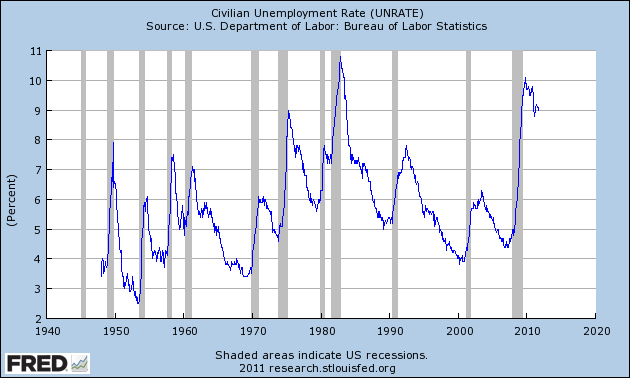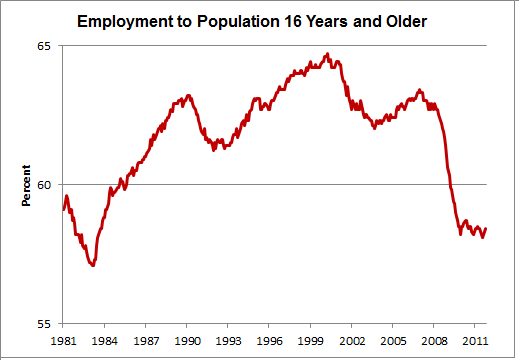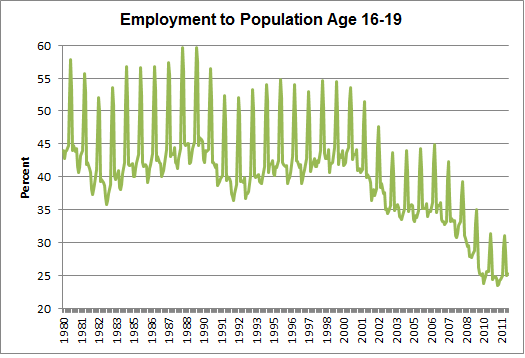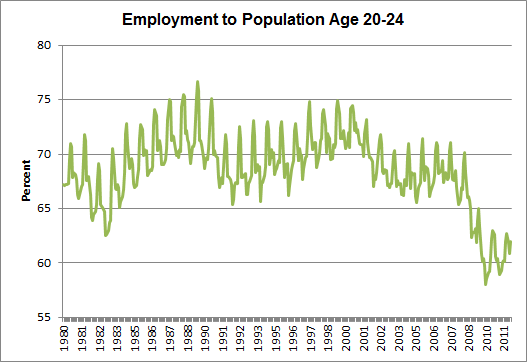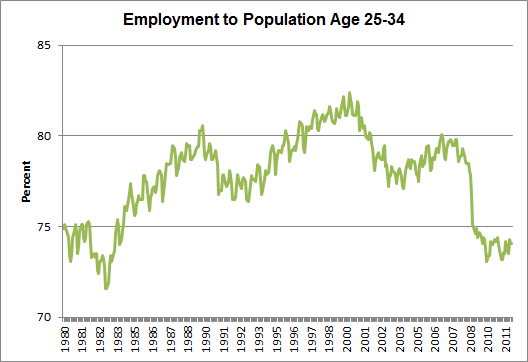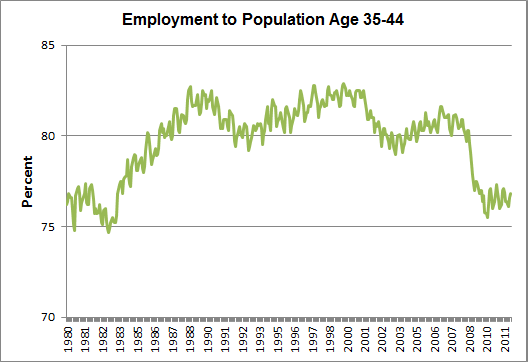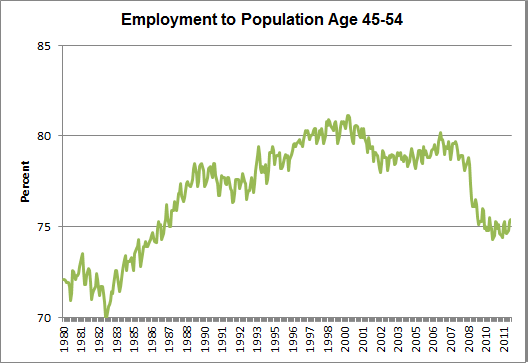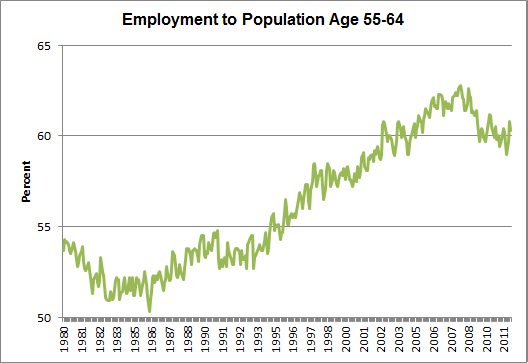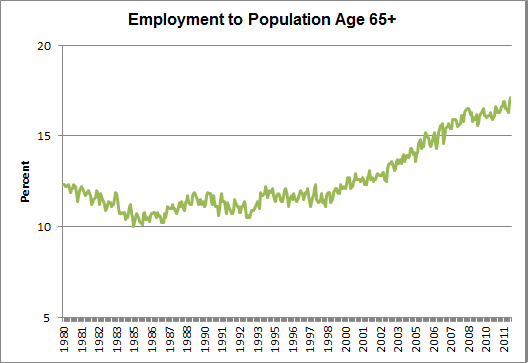Just prior to the recession that began in 2007 the unemployment rate in the United States was less than 4.5%. Once the recession started in December of that year though, the jobless rate quickly rose, ultimately reaching a peak of 10.1%.
With the unemployment rate still elevated, a deeper dive into the trends of who is employed provides a sharper picture of employment in the country. The employment to population ratio measures all who are employed as a percentage of the total population. There can be many reasons for not being employed, including but not limited to, choosing not to work, physically being unable to work and searching for, but not finding, work. However, over time these reasons generally remain constant.
The employment to population ratio of all individuals 16 years of age and older dipped during the 1982, 1990 and 2002 recessions. After the recessions the ratio improved, but only during the first two, did it exceed the previous peak. After the recession of 2002 the ratio never hit the previous top and due to the recession of 2007-2009 the ratio plunge to levels last observed during the early 1980s.
Measuring the total employed as a percentage of the total population for all people 16 and older does suffer from demographic issues. Generally speaking as people enter their late 50s to mid 60s many stop working. As the leading edge of the baby boom generation has begun retiring it is to be expected that the employment to population ratio would decrease some. To avoid his issue, the employment ratio can be subdivided into cohorts divided by age. The trends within each subgroup can be more telling than the total group.
The 16-19 year cohort has many spikes due to the fact that more teenagers work during the summer than any other season. The overall trend of teenagers working, however has dropped steadily over the past two decades. While it was common for ~40% of teens to be working during the school year and ~55% during the summer, over the past two years only ~25% are working during the school year and ~30% are working during the summer.
A similar trend has taken place for those age 20-24.
Perhaps the most troubling trend has been the drop in the employment to population ratio for those in the 25-34, 35-44 and 45-54 year old segments. These age ranges consist of the early and peak earnings years for most individuals. The last time these cohorts recorded a reading as low as today was during the early 1980s. There are a few possible explanations for the low figures including a decline of double income households and/or lack of available jobs. It is clear though that the ratio for these groups dropped dramatically in 2008 and has hardly changed over the last three years.
Looking at the 55-64 year old cohort in isolation, it would be hard to pick out the recessions prior to the most recent one. It was not until the 2007-2009 recession that less people ages 55 to 64 were working. Compared to the previous three cohorts, the drop in the employment to population ratio was not as steep, but the drop in the number of 55-64 year old individuals working certainly broke the upward trend.
The trend in the number of individuals working past the age of 65, as a percent of the total population, is in stark contrast to all other age groups. Today around 16.5% of people over the age of 65 are employed.
The decrease in the number of people working as a percentage of the population, especially between the ages of 25 and 64, could have negative consequences. Less total income by families would likely lead to less spending consumer spending, providing a damper on total economic growth in the U.S.. Fewer workers could also lead to less income, social security and other taxes being collected to fund existing government obligations.
Despite the high unemployment level and suppressed employment to population ratios the American economy is dynamic and has grown out of slumps far worse than the 2007-2009 recession. The economy has expanded every quarter without fail over the past two and a half years, just at slower pace then after most previous recessions. While the number of jobs added has not been strong enough to bring down the unemployment rate more than a percent, job creation has historically lagged economic growth in the U.S. economy.
